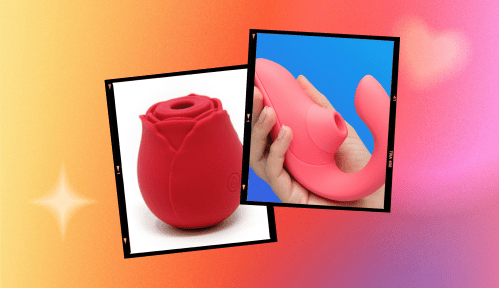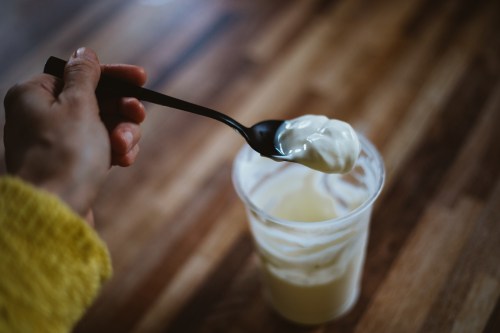Our editors independently select these products. Making a purchase through our links may earn Well+Good a commission
Bathrooms are pretty gross. A lot goes on in there, and giving the shower, toilet, and sink a good scrub can make you feel like a new person. Whether you’re someone who keeps the bathroom spotless at all times or someone who waits until the ring around the tub is begging you to be cleaned, you’re probably still missing the dirtiest places in your bathroom.
Experts in This Article
cleaning expert at Grove Collaborative
former grove guide at Grove Collaborative
certified building biologist, building materials specialist, and co-founder of Branch Basics
Though none of these spots are areas your body touches as frequently as your toilet, they all can harbor grime and dirt. Here’s four of the dirtiest places you hardly clean in your bathroom.
The 4 dirtiest places in your bathroom that you forget to clean
1. Drains
Since you don’t ever see the inside of your drains, you don’t give them much thought until there’s an issue.
“Even if you do not have a problem with clogged drains, soap scum and bacteria can build up and release mold spores or attract pests that breed in still water,” says Georgia Dixon, a grove guide at Grove Collaborative. “Ever wonder where those fruit flies are coming from?”
You should clean out your drains every 30 to 60 days as a preventative measure, and more frequently if clogging occurs. To properly clean your drain, Angela Bell, a grove guide at Grove Collaborative, says to remove the stopper and clean off any debris and buildup from the stopper and around the drain opening using a toothbrush or detail brush and a bathroom-specific cleaner, like the Grove Collaborative Tub & Tile Cleaning Concentrate ($7). Then, pour a natural drain cleaner like Drainbo Natural Drain Cleaner ($17) or DIY version into the drains and follow the manufacturer’s instructions. To DIY drain cleaner, pour 1/2 cup of baking soda down the open drain, followed by 1/2 cup white vinegar. Cover the drain and wait for the magic to happen. After 15-20 minutes, clear the mixture by pouring boiling water down the drain.
2. Behind the toilet
“Depending on how far away from the wall your toilet is, typically there is about an inch or two at least of tile or whatever material your floor is made of and that’s the place that’s easily missed,” says Marilee Nelson, cofounder of Branch Basics. “Dust can definitely collect there, but also, because of the toilet being there, moisture can be an issue or also if there’s backsplash. It can just be a place where germs and dirt can be harbored.”
Next time you clean your floor, be sure to hit that dirty spot. And if the space is super narrow and you can’t get down there with a mop, use whatever floor cleaner you use on a microfiber cloth. “I’ve even forgotten [that spot] myself, and I’ve gone back behind and I’ll pull my cleaning cloth back and it’s dirtier there than on the rest of the floor.”
3. Walls and ceilings
“Bathroom walls and ceilings are moist environments that can harbor mold, and sometimes the mold can be invisible,” says Bell. And if you flush with the seat up, watch out for toilet plumes that aerosolize particles of everything in your toilet.
Bell says you should clean your walls and ceiling every other week, or whenever you eep clean your bathroom. If you live in a humid climate or have a bathroom that traps a lot of moisture, you may need to clean your walls and ceiling more often.
To clean the walls, just use a bathroom-specific cleaner, (as they often contain ingredients to help with mold and bacteria, Bell says) and a microfiber cloth to pick up dust, hair, and other fine particles that collect on damp walls. “Pay attention to any fans that might be installed in the ceiling, and wipe down vents to remove dust buildup,” says Bell. “If you are addressing this for the first time, it can be beneficial to wear a mask to prevent any lung or sinus irritation from mold spores, as well as cleaning gloves, as mold can be a skin irritant.”
4. Shower curtain
I don’t know about you, but I do my best to avoid touching my shower curtain while in the shower. It’s just weird and wet. But even if you don’t touch it, that doesn’t mean it’s not getting dirty.
“If you look at the bottom of a shower curtain, especially the liner, it’s gonna be dirty and discolored because,” says Nelson. When water fills up in the bottom of your shower, the liner soaks it up, which can lead to mold, or discoloration from the minerals in tap water.
To clean your shower curtain and liner, Nelson says you can either throw them in the washing machine, or soak them overnight in water mixed with a scoop of the Branch Basics Oxygen Boost ($10). Another hack that works like a charm with plastic shower curtains: take the shower curtain down, wet the walls, and press your shower curtain against the wall. It should stick easily on the flat surface, allowing you to use your cleaner of choice to scrub away the mildew.
Sign Up for Our Daily Newsletter
Get all the latest in wellness, trends, food, fitness, beauty, and more delivered right to your inbox.
Got it, you've been added to our email list.











